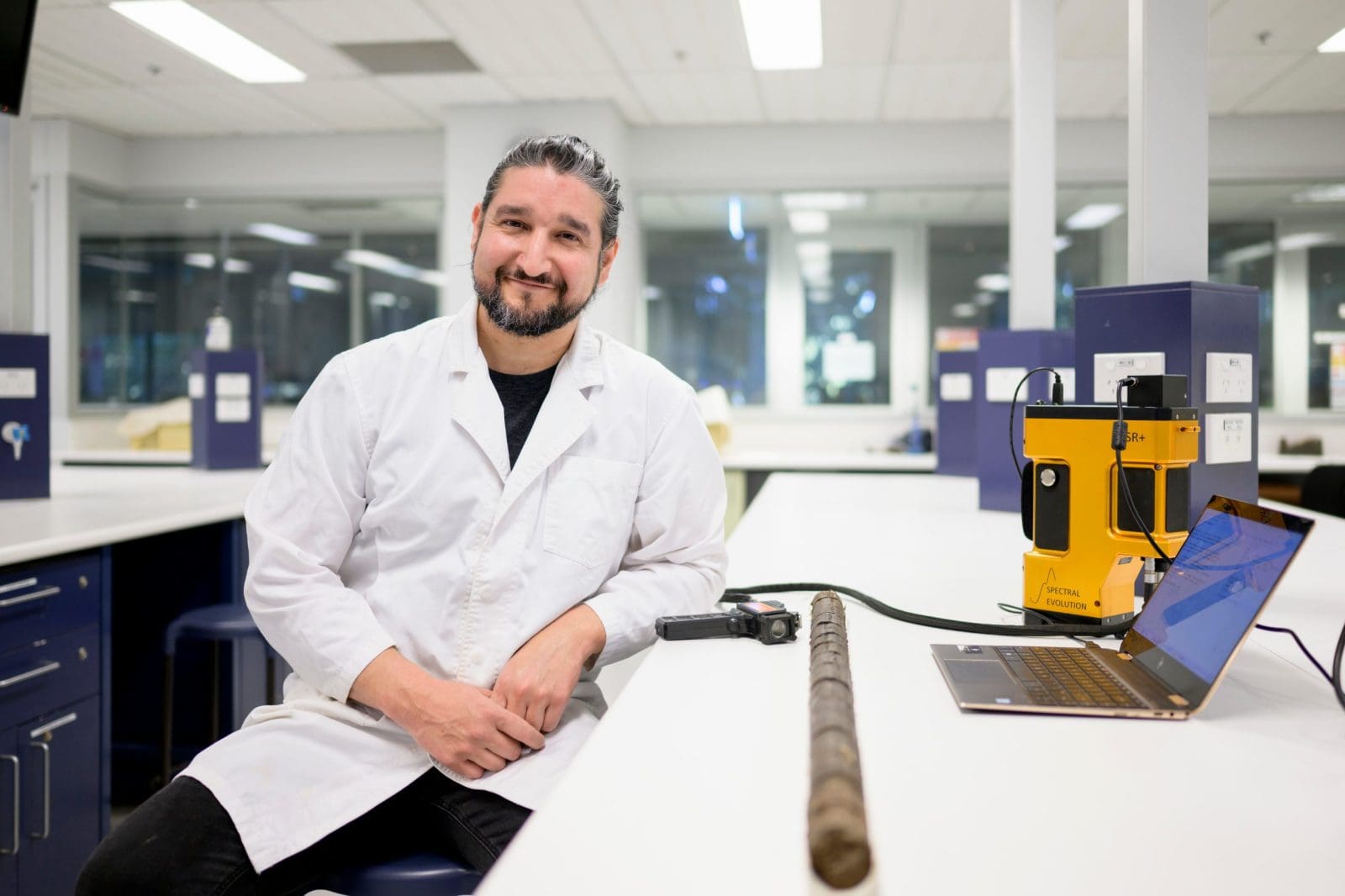
Soil scientist Dr Mario Fajardo. Source: AgriFutures
RESEARCHERS from the University of Sydney have found the use of satellite imagery, combined with proximal sensing on the ground, is the best method to reduce the cost of soil organic carbon testing and improve certainty.
Soil scientist Mario Fajardo, who led the research, said it is critical to reduce the uncertainty of the measurement itself to create a methodology that is both cheaper and scientifically sound.
“For carbon markets to work effectively, we need a soil carbon auditing method that maximises grower profitability and gives purchasers confidence that credits translate to actual carbon sequestration on the ground,” Dr Fajardo said.
Three methods under microscope
The research team used three farms managed by the University of Sydney, ranging in area from 70 hectares to about 2000 ha, to test three methodologies: traditional laboratory-tested soil samples; proximal sensing, which typically involves equipment coming into direct contact with the soil to produce a reading on-site, and a hybrid approach that combined proximal sensing and remote sensing, or satellite imagery.
At $120 a sample, the laboratory approach was four times the cost of the other two methods, which were both about $30.
“In the community there is this idea of just using satellite imagery because it’s almost free, it gives you 100-percent coverage and you can see the distribution of whatever you are measuring such as where the trees are growing, but it doesn’t give you an exact idea of what’s inside the soil.
“Soil is very difficult to assess, which is why you need to dig a hole and it’s why we’re using proximal sensing as a complement to remote sensing.
“It’s cheaper and faster than the lab test as you get the results right away.”
Dr Fajardo said the team developed a sampling program on the farms, along with an algorithm that combined the proximal and remote sensing data, to provide a level of certainty equivalent to laboratory testing.
“So that’s a success by itself.
“It’s also scalable because in Australia you have farms that can be six thousand hectares and can have similar soil types.
“Sampling strategies depend on the variability of soils.
“So, the opportunity for Australia is that with these methods you can potentially save a lot of money.”
The recommendations
Dr Fajardo said the technology required further development with the testing locations expanded, given the research was undertaken on farms with known management strategies.
However, the researchers are confident the Federal Government’s target of reducing soil carbon testing to $3 per hectare is achievable on properties of greater than 1000 ha that also have low variability, namely a Coefficient of Variation per unit area of lower than 0.01pc/ha.
They also recommended land managers devise a carbon sequestration plan before deciding to start the process of soil carbon accreditation as the assessment itself comes with a cost.
Source: AgriFutures

HAVE YOUR SAY